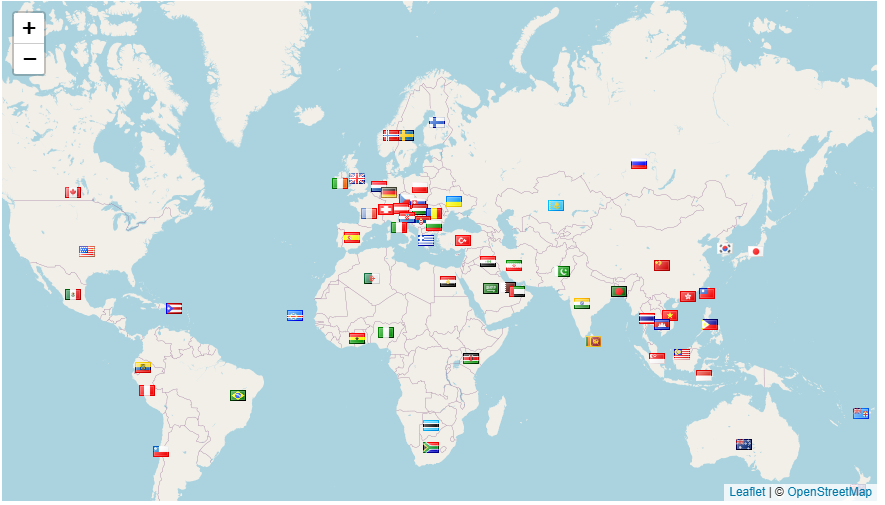Clusterization of MSMe and Warehouse Locations for Efficiency of Courier Placement
DOI:
https://doi.org/10.70822/journalofevrmata.v2i02.66Keywords:
Clusterization, MSMe, Warehouse, Courier, K-MeansAbstract
The increasing number of MSMes and the high demand for fast delivery present challenges for logistics companies in managing efficient routes and courier placement. Without proper clustering, warehouse placement and picking points are often uncoordinated, causing delivery delays and increased operational costs. This research aims to group MSMe and warehouse locations based on distance, delivery volume and demand patterns to find optimal zones for courier placement, thereby increasing the efficiency of delivery routes, reducing operational time and costs, and improving the quality of delivery services. The courier clustering management application uses the Scrum method, with database design based on class diagrams and functional processes through use cases and activity diagrams. Admin maps delivery areas based on sub-districts and determines fixed prices for each regional cluster. The process of optimizing the clustering of MSMe locations in City Geographic data for new shipments is retrieved via the Google Maps API, sending the complete address to the Geocodes API endpoint. The clustering process uses the K-Means method to group MSMe locations based on geographic proximity. The test results show the efficiency of logistics delivery as well as cheaper and fairer rates thanks to the application of flat rates for all courier service users, both for long and short distances.
References
K. Lasmiatun, “Creative Economy Improvement With Entrepreneurship for the People of Semarang City,” IJMA (Indonesian J. Manag. Accounting), vol. 5, no. 1, p. 125, 2024, doi: 10.21927/ijma.2024.5(1).125-134.
K. HAJI, “E-commerce development in rural and remote areas of BRICS countries,” J. Integr. Agric., vol. 20, no. 4, pp. 979–997, 2021, doi: 10.1016/S2095-3119(20)63451-7.
B. Fisher-Holloway and M. Mokhele, “Geographical patterns of warehousing facilities in the Cape functional region, South Africa,” Reg. Sci. Policy Pract., vol. 15, no. 6, pp. 1317–1338, 2023, doi: 10.1111/rsp3.12630.
R. Fernandez-Escobedo and H. Cuevas-Vargas, “The Digital Industrial Cluster (DIC) in a post-pandemic era: Exploring its theoretical deployment and potential benefits,” Procedia Comput. Sci., vol. 221, pp. 1131–1138, 2023, doi: 10.1016/j.procs.2023.08.098.
M. D. Simoni and M. Winkenbach, “Crowdsourced on-demand food delivery: An order batching and assignment algorithm,” Transp. Res. Part C Emerg. Technol., vol. 149, no. November 2021, p. 104055, 2023, doi: 10.1016/j.trc.2023.104055.
C. Li, “Commodity demand forecasting based on multimodal data and recurrent neural networks for E-commerce platforms,” Intell. Syst. with Appl., vol. 22, no. March, p. 200364, 2024, doi: 10.1016/j.iswa.2024.200364.
N. Reshetko, A. Safronova, S. Vakulenko, P. Kurenkov, and A. Sokolova, “Quality Assessment of Management Decisions in the System of Marketing and Public Relations of a Transport Enterprise,” Transp. Res. Procedia, vol. 54, no. 2020, pp. 380–387, 2021, doi: 10.1016/j.trpro.2021.02.087.
S. Sina Mohri, H. Ghaderi, N. Nassir, and R. G. Thompson, “Crowdshipping for sustainable urban logistics: A systematic review of the literature,” Transp. Res. Part E Logist. Transp. Rev., vol. 178, no. September, p. 103289, 2023, doi: 10.1016/j.tre.2023.103289.
S. Moslem and F. Pilla, “Planning location of parcel lockers using group Analytic Hierarchy Process in Spherical Fuzzy environment,” Transp. Res. Interdiscip. Perspect., vol. 24, no. October 2023, p. 101024, 2024, doi: 10.1016/j.trip.2024.101024.
A. Choudhry and S. Qian, “Quantification of truck accessibility in urban last-mile deliveries using GPS probe data,” Transp. Res. Part E Logist. Transp. Rev., vol. 186, no. June 2023, p. 103536, 2024, doi: 10.1016/j.tre.2024.103536.
A. Cosma, R. Conte, V. Solina, and G. Ambrogio, “Design of KPIs for evaluating the environmental impact of warehouse operations: a case study,” Procedia Comput. Sci., vol. 232, pp. 2701–2708, 2024, doi: 10.1016/j.procs.2024.02.087.
S. Varga, M. Cholakova, J. J. P. Jansen, T. J. M. Mom, and G. J. M. Kok, “From platform growth to platform scaling: The role of decision rules and network effects over time,” J. Bus. Ventur., vol. 38, no. 6, p. 106346, 2023, doi: 10.1016/j.jbusvent.2023.106346.
M. Kahalimoghadam, R. G. Thompson, and A. Rajabifard, “Determining the number and location of micro-consolidation centres as a solution to growing e-commerce demand,” J. Transp. Geogr., vol. 117, no. September 2023, p. 103875, 2024, doi: 10.1016/j.jtrangeo.2024.103875.
Y. Liu, Q. Ye, J. Escribano-Macias, Y. Feng, E. Candela, and P. Angeloudis, “Route planning for last-mile deliveries using mobile parcel lockers: A hybrid q-learning network approach,” Transp. Res. Part E Logist. Transp. Rev., vol. 177, no. June, p. 103234, 2023, doi: 10.1016/j.tre.2023.103234.
R. Auad, A. Erera, and M. Savelsbergh, “Capacity requirements and demand management strategies in meal delivery,” EURO J. Transp. Logist., vol. 13, no. December 2021, p. 100135, 2024, doi: 10.1016/j.ejtl.2024.100135.
Z. Li, W. Gu, and Q. Meng, “The impact of COVID-19 on logistics and coping strategies: A literature review,” Reg. Sci. Policy Pract., vol. 15, no. 8, pp. 1768–1794, 2023, doi: 10.1111/rsp3.12665.
F. Toilier, M. Serouge, J. L. Routhier, D. Patier, and M. Gardrat, “How can Urban Goods Movements be Surveyed in a Megacity? the Case of the Paris Region,” Transp. Res. Procedia, vol. 12, no. June 2015, pp. 570–583, 2016, doi: 10.1016/j.trpro.2016.02.012.
Downloads
Published
Issue
Section
License
Copyright (c) 2024 Annisa Aulia Nadhila, Yuri Ariyanto, Yan Watequlis Syaifudin

This work is licensed under a Creative Commons Attribution 4.0 International License.







